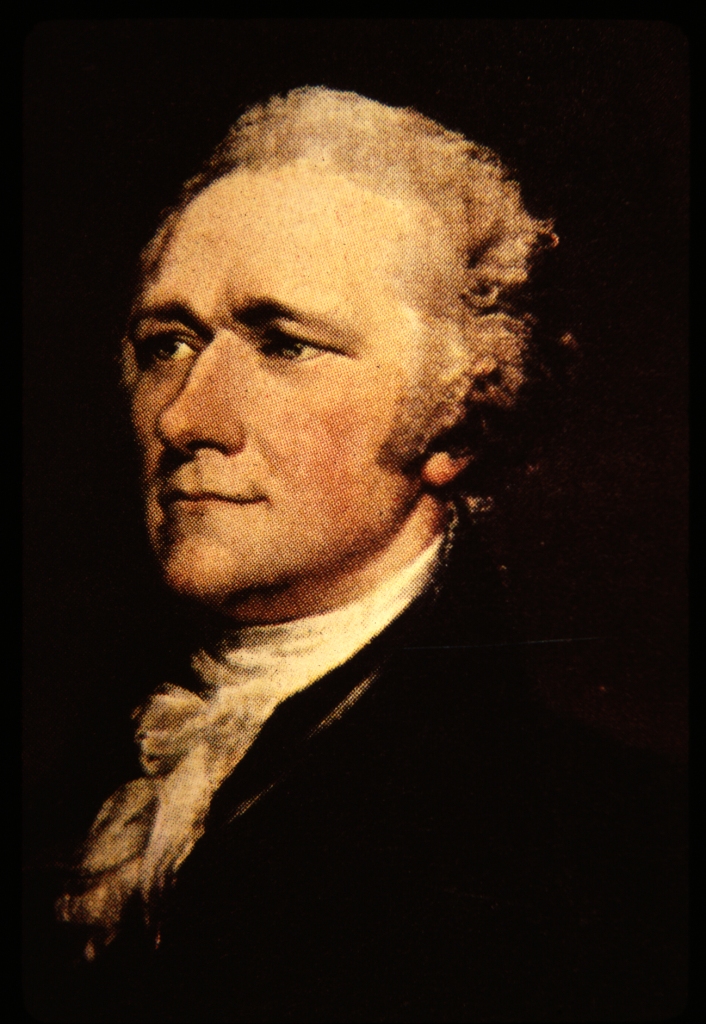
Note: I originally wrote and published this article on Alexander Hamilton in 2015. A decade earlier I’d read Ron Chernow’s excellent biography on Hamilton and was massively impressed by it. It was hard for me to grasp that one man had such a vast impact on the creation of our nation, yet I knew so little about him. My only solace was that, until Chernow’s book, not many others did either. Also enhancing the awareness of Hamilton and his life is the success of the recent Broadway hit play, “Hamilton,” which is largely based on Chernow’s book and recently been released in video format. When I wrote it, I meant this article as my tribute to our extraordinary Founder, Alexander Hamilton. If you intend to see the play in either of its versions, on the stage or video, however, knowing the information in this article will greatly enhance your experience. I invite you to read on…MA
_________________________________________________
In 1776 one of the men most responsible for coalescing the original thirteen American colonies around the idea of independence from Great Britain, John Adams, predicted that “the most intricate, the most important, the most dangerous and delicate business” following the revolution would be the creation of a functional national government. [1] The first government adopted by the former colonies, now called states, following their Declaration of Independence demonstrated just how prescient Adams was. Based on an agreement drafted in 1777 and ratified in March of 1781, the Articles of Confederation was adopted by states more interested in maintaining their own local control and authority than in establishing a strong central power. Consequently, the new government was beset with massive problems from the start, but had almost no authority to handle them. Many of these problems were economic in nature.
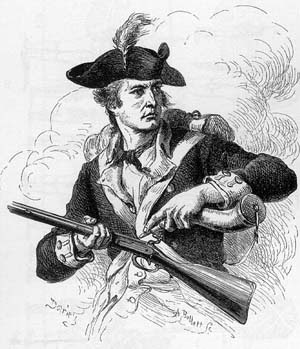
An example of these problems was the massive debt that had been incurred by the individual states to finance the war effort. Much of this debt was owed to the soldiers and officers of the Continental Army who, in return for their sacrifice, had been paid in IOUs and good wishes. By 1787 nearly six years had passed since the last battle of the war, yet virtually none of that debt had been paid. American securities traded at a fraction of their face value on European markets and the country hovered near bankruptcy. The future of the new nation was at serious risk.Some states, such as Massachusetts, attempted to handle their plight by passing oppressive taxes that resulted in further hardship on struggling farmers and their families. By February of 1787 it was so bad that a group of Continental Army veterans and farmers in Massachusetts rebelled, shutting down court houses and stopping farm foreclosures by force. Though put down by the state militia, the uprising, known to history as “Shays Rebellion” (after Daniel Shays, one of the rebellion leaders), demonstrated just how close the country was coming to anarchy. It was in response to this dire scene that delegates from each state met in Philadelphia in May of 1787 to discuss the need for a new structure of government. One of these delegates, from the state of New York, was Alexander Hamilton.

Of all the founding fathers, Hamilton’s story is at once the most unusual and unlikely. Born out of wedlock on the Caribbean island of Nevis, most likely in 1755 [2], and orphaned at a young age; he arose from an impoverished childhood with no prospects and bootstrapped himself to success on the back of a brilliant mind, hard work and luck. Sometime in late 1772 or early 1773, due to the assistance merchants and mentors who recognized his potential, Hamilton left his Caribbean boyhood home in St. Croix never to return; and by early 1774 was enrolled at King’s College in New York City. The advent of the American Revolution found him in the Continental Army where his brilliance and hard work brought him to the attention of none other than George Washington. Hamilton served as Washington’s aide de camp for most of the war. He was present at the climactic Battle of Yorktown, distinguishing himself in one of the final charges on British positions, becoming a famous war hero in the process. With the close of the war Hamilton returned to school intending to become a lawyer. He completed his education in record time, compressing three years of studies into nine months, and soon became one of the most sought after attorneys in the state of New York. Observing the situation in the country under the Articles of Confederation, he became active in politics as one of the young country’s staunchest advocates for a strong central government; one that could unify the nation and potentially get a handle on the economic problems besetting it; about which Hamilton had definite ideas.
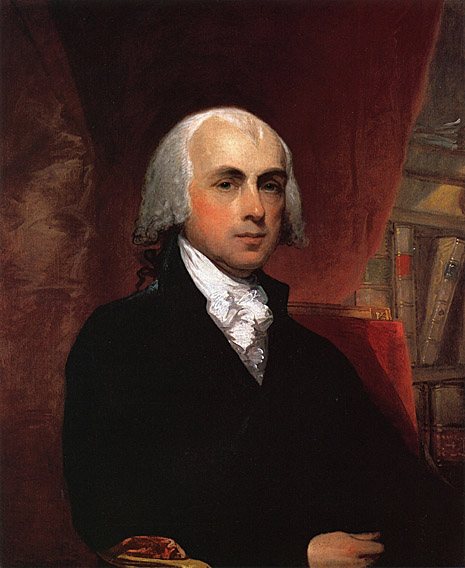
So it was that Alexander Hamilton, James Madison, Benjamin Franklin and others met in Philadelphia in the summer of 1787 and drafted what would become the United States Constitution. Despite the disaster that had been the Articles of Confederation, however, it was not a foregone conclusion that the various states would ratify the new governmental structure. Many of the early patriots, such as Samuel Adams and Patrick Henry, were ardent states rights advocates and did not want the centralization of power advocated by Hamilton. The months following the writing of the Constitution, while the states were debating its ratification, found Hamilton and Madison collaborating on a series of 85 essays in support of the Constitution; essays which would become known to future generations as The Federalist Papers.[3] Not content to let the states determine the fate of the Constitution without his input, Hamilton used the Federalist essays to explain the various aspects and features of the new government in an effort to get it passed. In June of 1788, New Hampshire and Virginia became the ninth and tenth states ratifying the Constitution, thus ensuring its passage and ushering in the new government that would change the history of the world.
Hamilton’s next task was to ensure that things got off on the right foot for the new government. To that end he knew he had to ensure the best person possible was chosen to be the first President; none other than George Washingtonhimself. In August of 1788 Hamilton sent Washington a two volume copy of the Federalist Papers, and at the same time broached the subject of Washingtonbecoming President. Reluctantly, Washington eventually agreed to run and, in the election of February, 1789, he easily outpolled John Adams, who became Vice President. Washington was inaugurated on April 16th, 1789, and the new government of the United States of America was off and running.
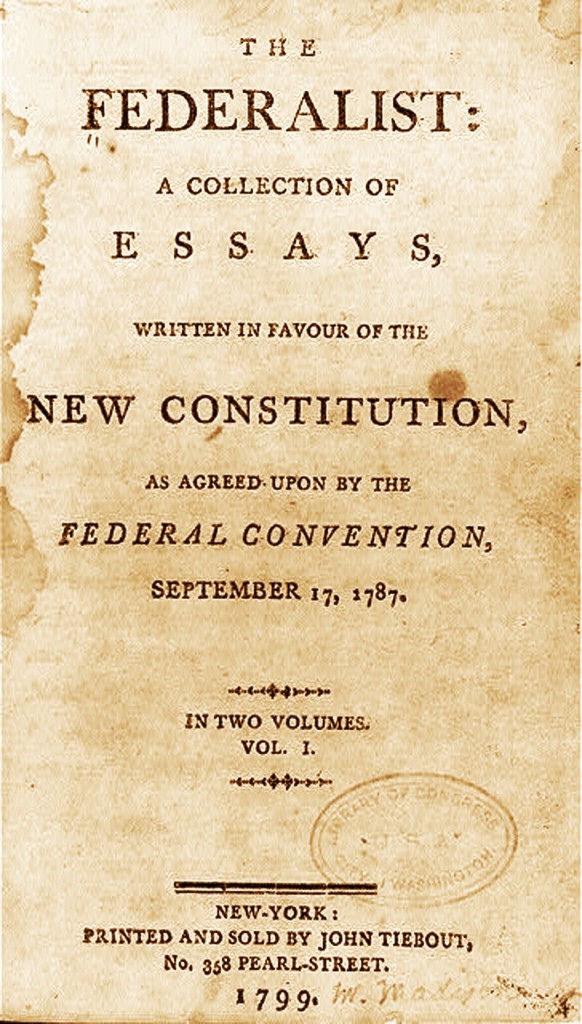
Washington chose his first cabinet, selecting Thomas Jefferson as Secretary of State and Alexander Hamilton as the first Secretary of the Treasury. Hamilton thrived on the new post and his accomplishments, in retrospect, seem literally incredible. Virtually single handedly he established the rudiments of what would become the modern U.S. economic system. He set up the first tariff and custom system and, to assist in implementing it, established the Coast Guard. He established the first U.S. mint, adopting the “dollar” as the monetary unit as well as the various denominations of coins. In a brilliant move, Hamilton proposed that the war debt of the states be assumed by the federal government, thus giving the states a vested interest in the success of the new government; and it was his hard work that got Congress to pass that proposal in 1790. Those who held the original war debt, therefore, could submit their old IOUs for new securities backed by the government. Many of these people had given up on ever collecting, or thought they would only get a small settlement, if any. This new plan endeared them to the new government, as it did the states. Hamilton was particularly concerned with turning the U.S. into a manufacturing based economy and understood that to do that involved creating a favorable climate for finance and banking. Manufacturing requires factories, and factories require finance and banks, both of which were in short supply in the young United States. To help facilitate this, Hamilton proposed that Congress charter a central bank. He proposed that the bank be financed by a ten million dollar capital investment; eight million coming from public sale of stock and two million from the government. Three quarters of the eight million dollar public investment would be in the form of the war debt securities issued as a result of the government assumption of the war debt. These securities would be taken in trade for bank shares. The young Treasury Secretary was a master at interlocking his systems and making them dependent on one another.
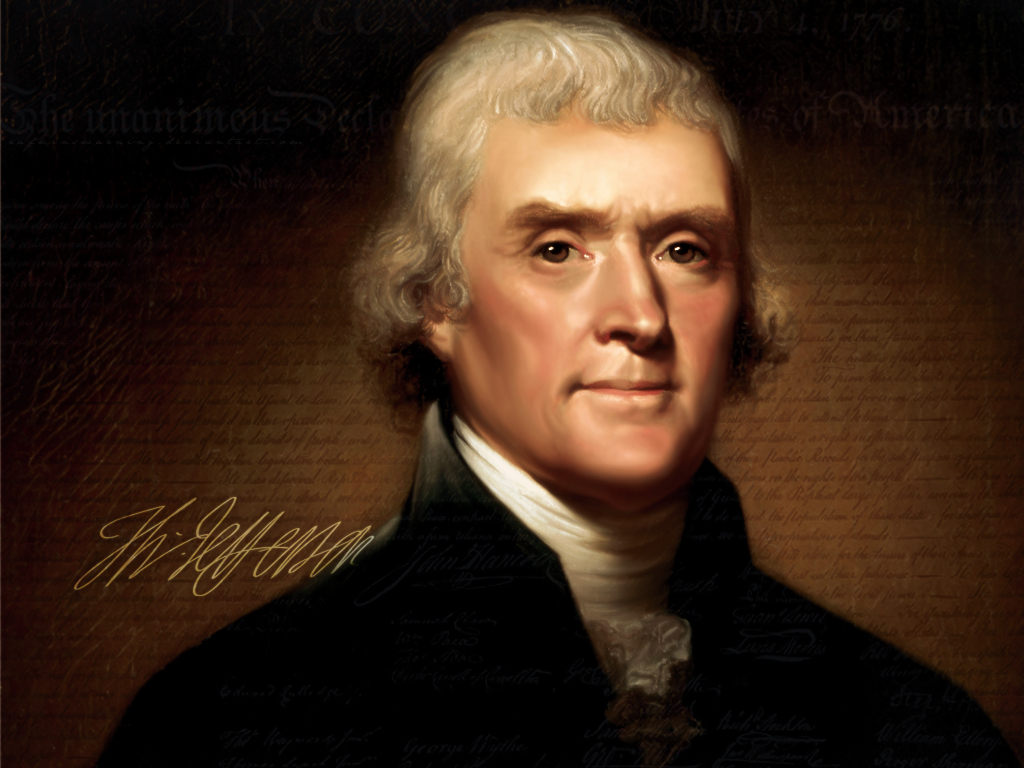
Hamilton’s stance on the necessity of the bank, as well as his belief that the Constitution authorized the power to establish it based on his theory of “implied powers”[4] placed him in direct opposition to the views of many of the preeminent patriots of the day, including Thomas Jefferson, James Madison and John Adams. All three of these men viewed banks and banking with a jaundiced eye and Madison and Jefferson disagreed vehemently on Hamilton’s interpretation of Constitutional powers. They argued that, based on Hamilton’s view, the federal government could assume unwarranted power. Being ardent advocates of freedom and having witnessed personally the usurpations of the British government, they stridently opposed any notion that they saw as pushing the U.S. in that direction.
On the other hand, Hamilton saw great value in banks; and a great necessity for the finance they provided. While acknowledging that cyclic speculative abuses were sometimes a negative outgrowth of banking activities, he saw far more potential for good in their functions than bad. According to Hamilton: “If banks, in spite of every precaution, are sometimes betrayed into giving a false credit to the persons described, they more frequently enable honest and industrious men of no capital to undertake and prosecute business with advantage to themselves and the community.”[5] In the early 1790s the country had no agreed upon currency and very much needed an established and uniform money supply. Due to the scarceness of money, many transactions were done as barter, or relied on warehouse commodity receipts, chiefly tobacco, as money. Realizing the country was hamstrung by these problems, Hamilton viewed the bank as a way to solve them. The Constitution had already established gold and silver as money for the United States but coins had not yet been minted. Hamilton was also addressing that situation and saw the central bank as a vehicle that could issue banknotes redeemable in gold and silver coin. Should the bank issue too many notes, their value would come into question by those holding them and they would exchange them for gold and silver. This would force the bank to limit its issuance of notes. In this way the system would be self correcting and would supply the country with much needed currency.
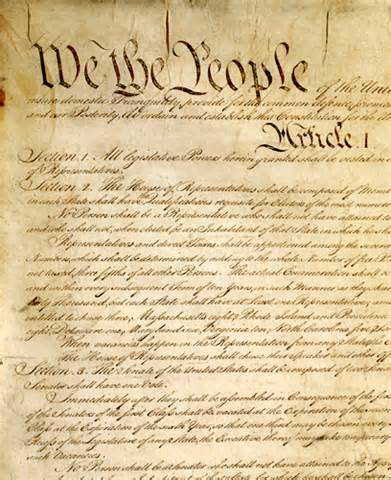
Alexander Hamilton took Jefferson and Madison head-on over the central bank issue, as well as the Constitutional questions surrounding it. The matters they debated over the interpretation of Constitutional powers reverberate to this day. In January and February of 1791, Hamilton’s views held sway as both the Senate and the House passed the central bank bill decisively. The bill then went to President Washington to be either signed or vetoed. Washington consulted the views of Thomas Jefferson and upon hearing his vehement opposition was quite shaken. He forwarded Jefferson’s view to Hamilton for a response. One week later, on February 23, 1791, Hamilton delivered to Washington his 15,000 word treatise in defense of the bank as well as his “implied powers” interpretation of the Constitution. Washington was sufficiently impressed. He never went back to Jefferson and signed the bill into law the next day. Hamilton had his central bank.[6]
Amidst speculation that the new stock would ultimately pay as much as 12% in dividends, the initial stock offering to the public for the new bank took place on the 4th of July, 1791, and was done in the form of scrip.[7] The investor would make a 25$ down payment and for this was entitled to buy a set number of shares, paying off the balance owed in 18 months. Unexpectedly, the issue was sold out in an hour leaving many a would-be investor unhappy they’d missed out. Following the initial offering, trading in the shares commenced. The unsatisfied demand resulted in a seller’s market that drove the price of the scrip higher and higher. The first “bubble” in U.S. history was underway.
At first all Hamilton could do was watch in a kind of horror as the bubble expanded and expanded. By the 2nd week of August, the 25$ scrip of a month before was selling at $300. Having no precedents upon which to base his handling of the situation, Hamilton was in a pickle. He knew the share price had reached a level far beyond its real value, and felt an obligation to protect the financial system and limit the damage he could see was coming. He let it be known in various circles that he felt the share price was too high and later explained his reasoning as follows: “I thought it advisable to speak out, for a bubble connected with my operations is, of all the enemies I have to fear, in my judgment the most formidable…to counteract delusions appears to me the only secure foundation on which to stand. I thought it therefore expedient to risk something in contributing to dissolve the charm.”[8] In other words, Hamilton actually did what at least one economist, Dean Baker, urged the Federal Reserve to do in 2006 with regard to the then ongoing housing bubble: to effect a pre-emptive bursting of the bubble so as to limit the damage of the inevitable crash. [9]
Finally, on August 11, the bursting of the bank share bubble occurred when bankers and financiers started refusing to extend more credit to some of the larger speculators. The value of the shares started to crash. Hamilton took further action to limit the crash by leaking to a prominent speculator his estimate of the actual scrip value (about $190) and by authorizing the government purchase of other government securities, which caused their price to rise. This had the peripheral effect of shoring up confidence in the bank shares and helped to halt their slide. Through these measures, Hamilton successfully managed the crisis and by September 1791 had stabilized the scene.
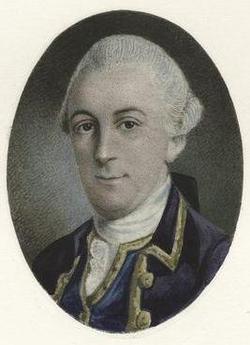
The relief was short lived, however. By the end of the year, an unscrupulous investor by the name of William Duer [10] had embarked on a bank share, market cornering strategy using leveraged (borrowed) funds, which once again drove the scrip price through the roof. Again seeing the danger, Hamilton wrote to Duer urging him to withdraw from his scheme. The bursting of this bubble occurred when interest rates rose and credit tightened, which meant Duer and his group had to start unloading their shares to pay their loans. By early March, 1792, Duer had to stop paying his creditors and within 24 hours, twenty-five New York financiers went bankrupt. What has become known as “The Panic of 1792” was in full swing. Once again, Hamilton acted, authorizing another purchase of government securities through intermediaries while obscuring the fact that it was the government doing the buying. In this way, he once again stabilized the market and limited the damage of the crash.
Looking at Hamilton’s actions now, nearly 228 years later, it is difficult not to be impressed with his handling of the bank share bubble and crash of 1792. The strategies he used in handling the Panic today are considered the standard for handling this type of situation; something he rarely gets credit for, though he could be considered the first to develop and use them. More important to him, however, was that he was able to protect the nascent economy of the young United States from serious damage at a time when it was most vulnerable. Another offshoot of the Panic of 1792 was that brokers now realized the need to establish rules and regulations for a more orderly market. Consequently, on May 17, 1792, two dozen of them met under a buttonwood tree at 68 Wall Street and established rules to govern securities trading. It was this agreement, known as the Buttonwood Agreement, which established the basis for what would become known as the New York Stock Exchange.
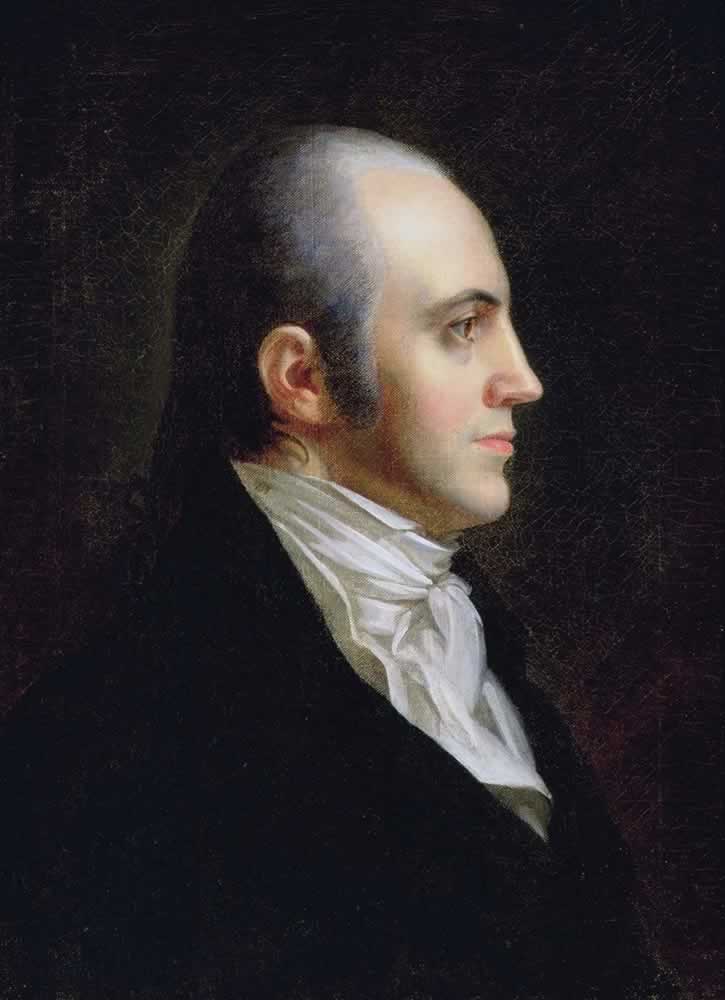
Alexander Hamilton died in 1804 at the age of 49 when he was shot by Aaron Burr [11](who at the time was Vice President under Jefferson) in a duel. Due to his relatively young death, across what would have been the later years of his life he was not able to use his prodigious intellect and literary skills to either add to or defend his massive contributions to the founding of the United States and the economic system that would come to dominate the world over the next two centuries. He was a controversial figure who, because of the stances he took in support of a strong central government, banking system, a manufacturing based economy and the “implied powers” interpretation of the Constitution, found himself at odds with other founding fathers such as Thomas Jefferson and James Madison. As a result, Hamilton is often not given his due historically. Nevertheless, as can be seen from the information presented here, though there are a number of founding fathers to whom we Americans are indebted for our form of government and the freedom and prosperity it has brought us, none stand taller than Alexander Hamilton. As the man most responsible for getting the United States to adopt the Constitution, and who virtually single-handedly developed the major elements of the modern American finance system; defended them, and implemented them, his record is unparalleled in the annals of American history.
For these reasons he was a giant of the Founding generation, and should be acknowledged as such.
In this article you have my humble effort to do so.
Copyright © 2015
By Mark Arnold
All Rights Reserved
[1]Ref: Alexander Hamilton by Ron Chernow, pg 224 paperback edition
[2]The date of Hamilton’s birth is questionable. The historical information available from his early years indicates January 11, 1755, while Hamilton himself and his family in later years referred to 1757 as his year of birth.
[3]To this day the Federalist Papers are considered the authoritative reference interpreting the Constitution and are frequently cited in court cases involving Constitutional issues. Hamilton, himself, was by far the most prolific of the Federalist Papers authors, writing 51 of the 85 essays. John Jay, who was to become the first Supreme Court Chief Justice of the United States, wrote 5, while the remaining 29 were written by James Madison.
[4]The theory of implied powers argued by Hamilton was based on the premise that powers not specifically granted to the government or a branch of it by the Constitution were nevertheless implied by the general statement of the power assigned. For instance, Hamilton felt that the power to establish a central bank was implied by the general mandate of the Constitution to provide for the general welfare.
[5]Ref: Alexander Hamilton by Ron Chernow, pg 348 paperback edition
[6]Historical data taken from Alexander Hamilton, by Ron Chernow, pg 348 to 355, paperback edition
[7]Scrip is a certificate representing a fraction of a share or stock. In a broader economic sense scrip is a term for any substitute for legal tender and is often a form of credit. Scrips were created as company payment of employees as a means of local commerce in times where regular currency is unavailable, such as remote coal towns, military bases, ships on long voyages, or occupied countries in war time. Besides company scrip, other forms of scrip include land scrip, vouchers, token coins such as subway tokens, IOUs, arcade tokens and tickets, and points on some credit cards. Ref: Encarta Dictionary and Wikipedia
[8]From Alexander Hamilton, by Ron Chernow, pg 359, paperback edition
[9]Dean Baker (1958-) is co-founder of the Center for Economic Policy and Research, an economic policy think-tank in Washington D.C. Baker is one of the few economists who predicted the crash of the housing bubble of 2007-2008. He warned about the crisis and the government policies in several media interviews from 2002 to 2005. Basing his outlook on house-price data-sets produced by the US government, Baker was among the first economists to assert that there was a bubble in the US housing market in August 2002, well before its peak in December 2005, and one of the few economists to predict that the collapse of this bubble must lead to recession. His prediction for when this recession would hit was only off by several months. Ref: Wikipedia
[10]William Duer (1743-1799) was a British-born American lawyer, developer, and speculator from New York City, and a one time friend and associate of Hamilton’s. Upon his appointment as Secretary of the Treasury, Hamilton created a special Assistant Secretary post just for Duer, who didn’t last long on the job due to his propensity for using his position to acquire inside information and using it to his own benefit while leaking it to others. As a result of his role in causing the Panic of 1792 Duer wound up in debtor’s prison, where he stayed the rest of his life. Ref: Alexander Hamilton, by Ron Chernow and Wikipedia
[11]Aaron Burr (1756 –1836) was an American attorney and politician who served in the Continental Army during the Revolutionary War and the U.S. Senate from the state of New York (1791-1797). He was the third Vice President of the United States (1801–1805) serving during President Thomas Jefferson’s first term. In 1804, the last full year of his single term as Vice President, Burr killed his political rival Alexander Hamilton in a famous duel. Burr was never tried for the illegal duel, and all charges against him were eventually dropped, but Hamilton’s death ended Burr’s political career. Ref: Wikipedia and Alexander Hamilton by Ron Chernow

